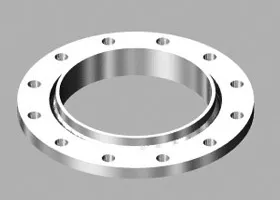-
Cangzhou Yulong Steel Co., Ltd.
-
Phone:
+86 13303177267 -
Email:
admin@ylsteelfittings.com
- English
- Arabic
- Italian
- Spanish
- Portuguese
- German
- kazakh
- Persian
- Greek
- French
- Russian
- Polish
- Thai
- Indonesian
- Vietnamese
- Zulu
- Korean
- Uzbek
- Hindi
- Serbian
- Malay
- Ukrainian
- Gujarati
- Haitian Creole
- hausa
- hawaiian
- Hebrew
- Miao
- Hungarian
- Icelandic
- igbo
- irish
- Japanese
- Javanese
- Kannada
- Khmer
- Rwandese
- Afrikaans
- Albanian
- Amharic
- Armenian
- Azerbaijani
- Basque
- Belarusian
- Bengali
- Bosnian
- Bulgarian
- Catalan
- Cebuano
- China
- China (Taiwan)
- Corsican
- Croatian
- Czech
- Danish
- Esperanto
- Estonian
- Finnish
- Frisian
- Galician
- Georgian
- Kurdish
- Kyrgyz
- Lao
- Latin
- Latvian
- Lithuanian
- Luxembourgish
- Macedonian
- Malgashi
- Malayalam
- Maltese
- Maori
- Marathi
- Mongolian
- Myanmar
- Nepali
- Norwegian
- Norwegian
- Occitan
- Pashto
- Dutch
- Punjabi
- Romanian
- Samoan
- Scottish Gaelic
- Sesotho
- Shona
- Sindhi
- Sinhala
- Slovak
- Slovenian
- Somali
- Sundanese
- Swahili
- Swedish
- Tagalog
- Tajik
- Tamil
- Tatar
- Telugu
- Turkish
- Turkmen
- Urdu
- Uighur
- Welsh
- Bantu
- Yiddish
- Yoruba

Sep . 19, 2024 17:27 Back to list
din flange pn16
Understanding DIN Flange PN16 A Comprehensive Overview
Flanges play a crucial role in piping and mechanical systems, providing a reliable means of joining different components together. Among the various types of flanges available, the DIN (Deutsches Institut für Normung) flange is widely recognized for its standardized dimensions and excellent performance characteristics. In this article, we will focus on the DIN flange PN16, exploring its features, applications, and advantages.
What is DIN Flange PN16?
DIN flange PN16 refers to a specific type of flange that adheres to the German standard (DIN) and is rated for a nominal pressure (PN) of 16 bars (approximately 232 psi) at a temperature of up to 20 degrees Celsius. The PN designation indicates the allowable pressure for the operations of the piping system and its associated components. The DIN standardization ensures uniformity in dimensions, bolt holes, and pressure ratings, facilitating interoperability in various industrial applications.
Key Specifications
DIN flanges, including the PN16 variant, are characterized by several specifications, including
1. Material DIN flanges can be made from various materials, including carbon steel, stainless steel, and alloys, providing a wide range of chemical and thermal resistance as per the requirements of different applications.
2. Dimensions The dimensions of DIN flanges are standardized, which simplifies the design process and ensures compatibility among different systems. Common sizes range from DN10 (10mm nominal diameter) to DN600 (600mm nominal diameter).
3. Surface Finish The surface finish of DIN flanges is essential for ensuring effective sealing. Standard finishes include raised face, flat face, and ring type joint, each serving specific applications and sealing requirements.
4. Bolt Holes The number and size of bolt holes are standardized according to the flange size, ensuring that flanges can be securely bolted to each other or to other piping components.
Applications of DIN Flange PN16
din flange pn16

DIN flanges, especially the PN16 variant, are widely used in several industries, including
- Water Treatment Plants Due to their ability to withstand significant pressure, DIN PN16 flanges are commonly used in water distribution systems and sewage treatment facilities.
- Petrochemical Industries The durability and resistance of DIN flanges to corrosive chemicals make them suitable for various applications in the petrochemical sector.
- Heating and Cooling Systems Used in the assembly of heat exchangers and piping in HVAC systems, they ensure efficient thermal management.
- Food and Beverage Industry When constructed from stainless steel, DIN flanges are ideal for applications that require sanitary conditions and high levels of cleanliness.
Advantages of DIN Flange PN16
1. Standardization The DIN standard provides a consistent approach, reducing the risk of compatibility issues.
2. Versatility Available in various materials and sizes, DIN flanges can cater to many applications across different industries.
3. Reliability The ability to handle high pressure while maintaining integrity makes DIN PN16 flanges a dependable choice for engineers and designers.
Conclusion
DIN flange PN16 is an essential component in various industrial applications, offering standardized dimensions and high reliability under pressure. Understanding the specifications and uses of these flanges allows professionals to make informed decisions when designing and implementing mechanical systems. As industries continue to evolve, the importance of quality components like DIN flanges cannot be overstated, ensuring safety and efficiency in operations.
Latest news
-
ANSI 150P SS304 SO FLANGE
NewsFeb.14,2025
-
ASTM A333GR6 STEEL PIPE
NewsJan.20,2025
-
ANSI B16.5 WELDING NECK FLANGE
NewsJan.15,2026
-
ANSI B16.5 SLIP-ON FLANGE
NewsApr.19,2024
-
SABS 1123 FLANGE
NewsJan.15,2025
-
DIN86044 PLATE FLANGE
NewsApr.19,2024
-
DIN2527 BLIND FLANGE
NewsApr.12,2024
-
JIS B2311 Butt-Welding Fittings LR/SR 45°/90° /180°Seamless/Weld
NewsApr.23,2024











